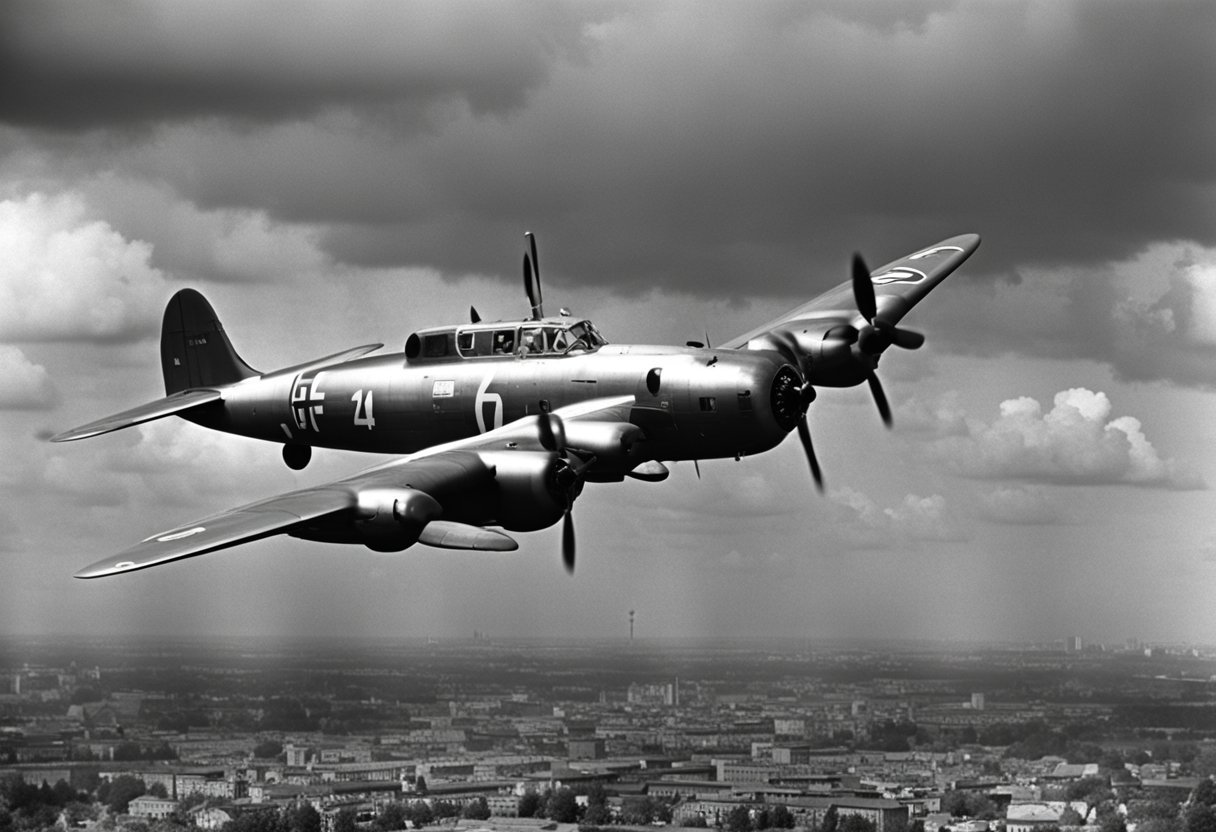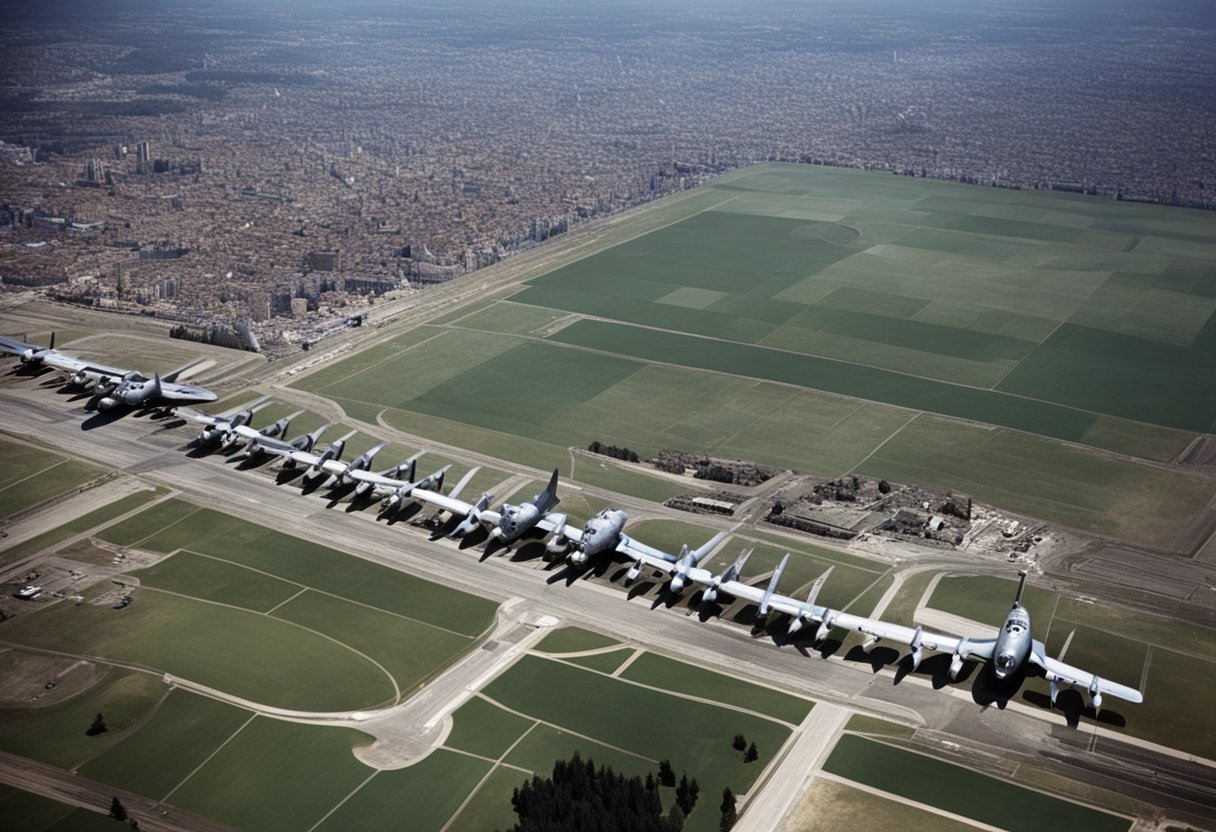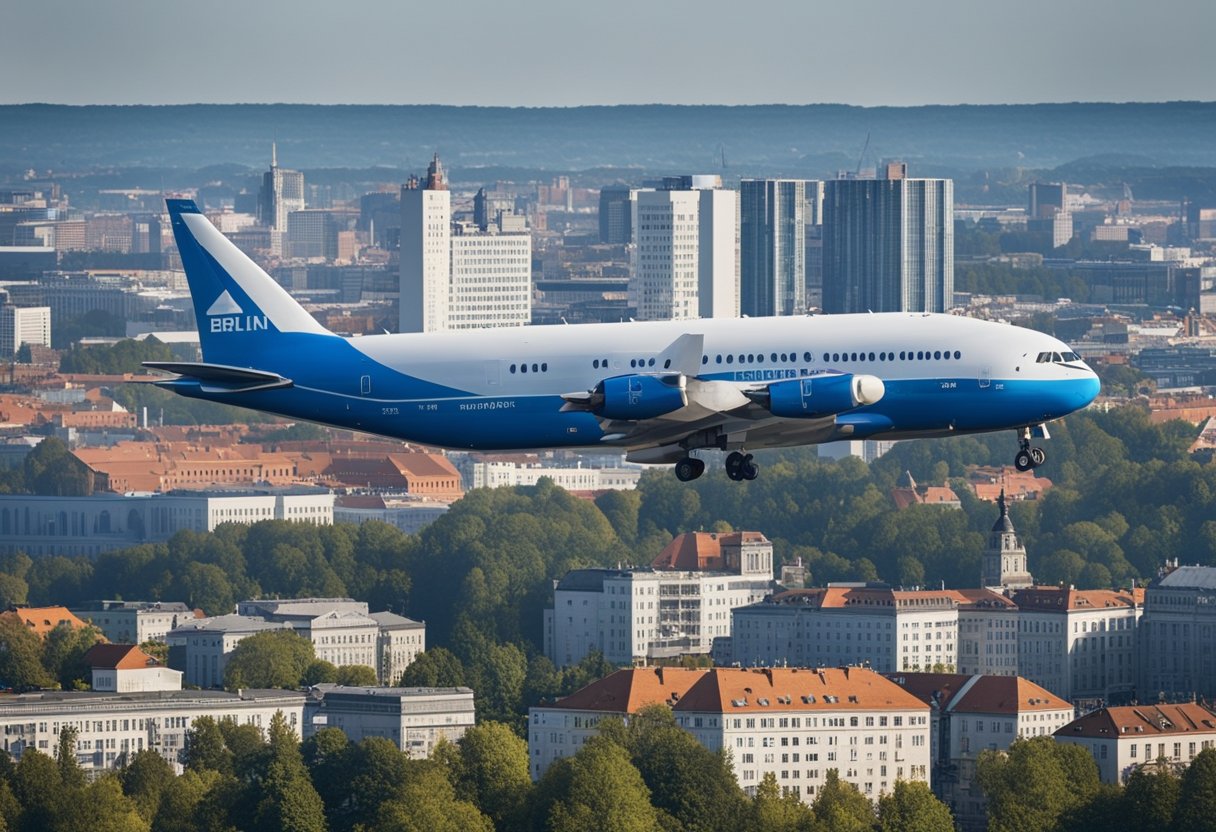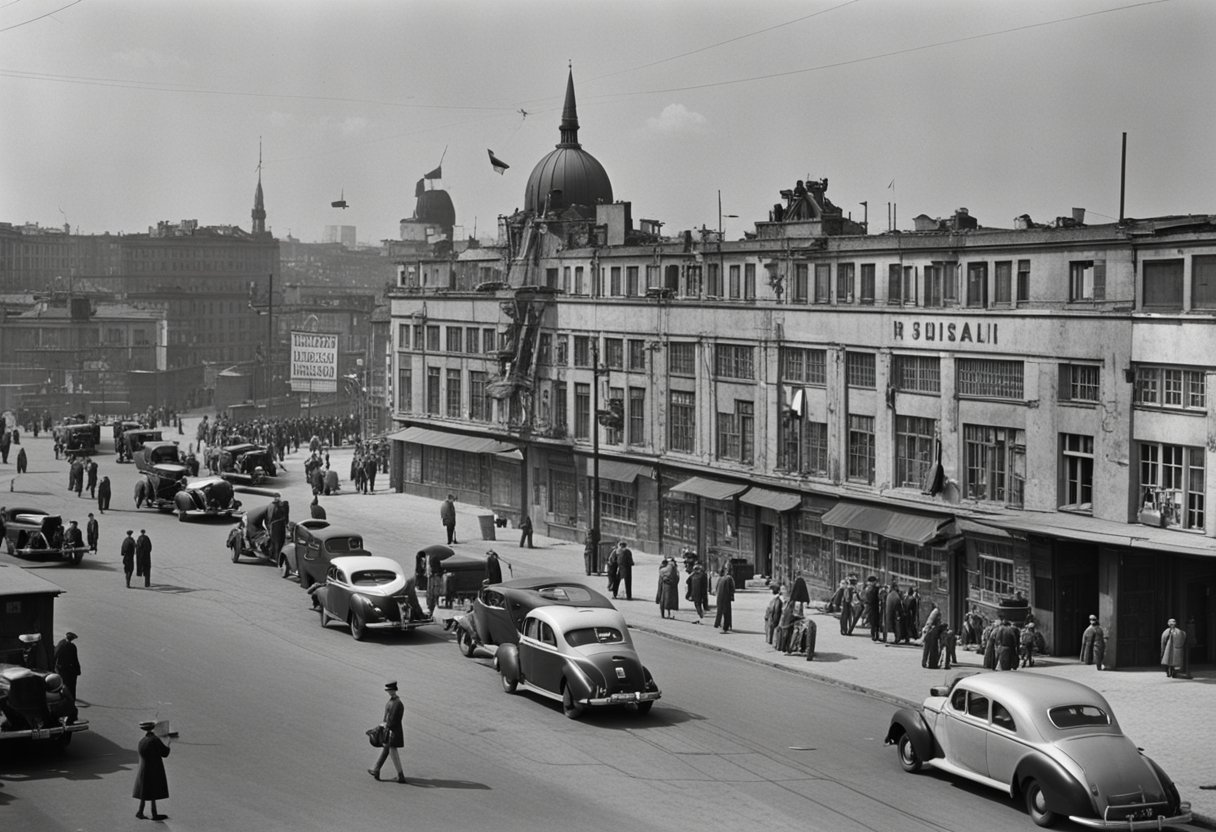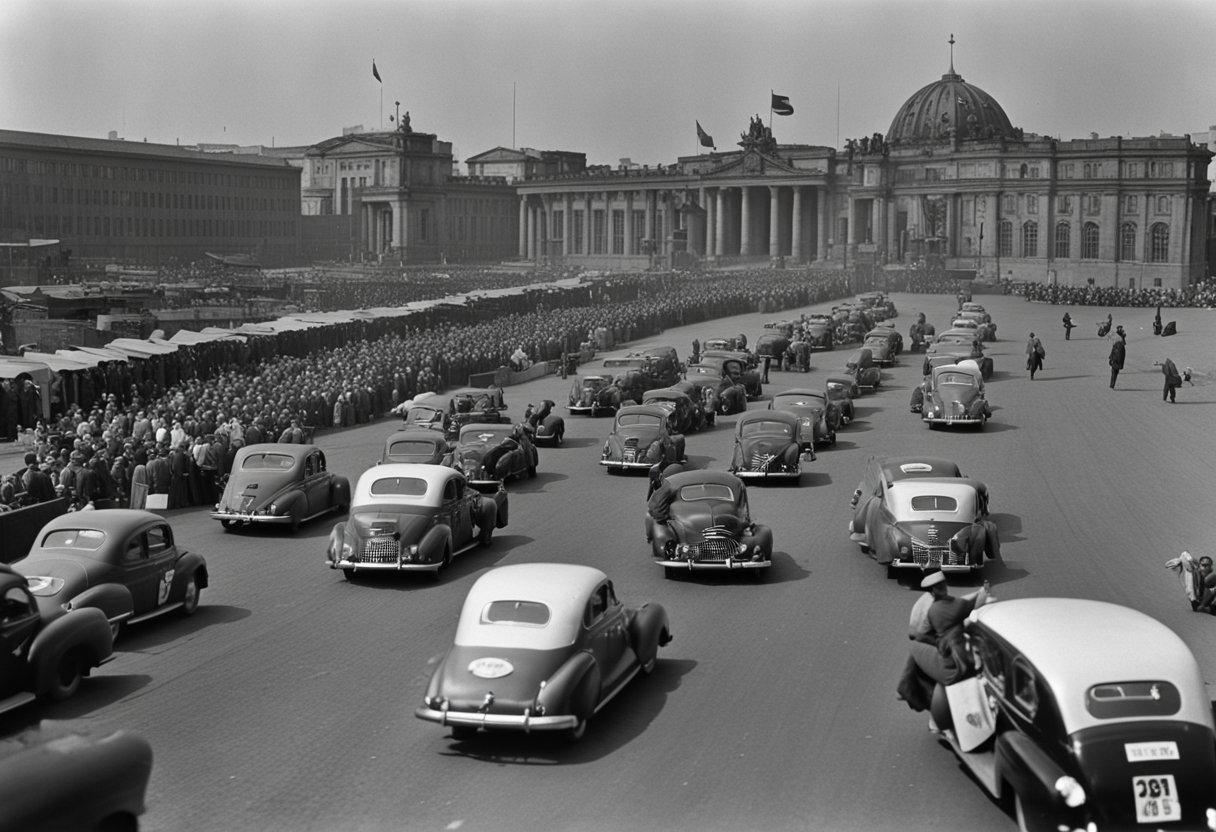The Berlin Blockade was a pivotal event in the early years of the Cold War, lasting from June 24, 1948, to May 12, 1949.
Initiated by the Soviet Union, the blockade was an attempt to exert control over the city of Berlin by cutting off all land and water routes to West Berlin, located deep within East German territory.
The blockade’s aim was to pressure the Allied powers—the United States, the United Kingdom, and France—to withdraw their presence from West Berlin, allowing the Soviets to exert their influence over the entire city.
In response to the blockade, the Allies organized the Berlin Airlift, a massive humanitarian effort that saw aircraft flying around the clock to deliver food, fuel, and other essential supplies to the isolated residents of West Berlin.
As a direct challenge to the Soviet obstruction, the airlift became a symbol of resistance against Soviet expansion and a demonstration of Allied solidarity. Over the course of eleven months, the airlift utilized three flight corridors from West Germany to West Berlin, ensuring the city remained connected to the West despite the blockade.
The crisis highlighted the stark divisions within postwar Germany and the mounting tensions between East and West that characterized the global struggle for power during the Cold War.
General Lucius D. Clay was the military governor of the US zone in Germany during the crisis, playing a critical role in organizing and maintaining the airlift operations.
The eventual lifting of the blockade marked a significant failure for Soviet policies and subsequently led to the formal division of Germany into East and West, solidifying the bifurcated nature of the Cold War in Europe.
Historical Context
The Berlin Blockade, a profound event in post-World War II history, lasted from June 24, 1948, to May 12, 1949. It represented a high-stakes attempt by the Soviet Union to control all of Berlin and deny the Western Allies’ access to West Berlin.
Post-World War II Tensions
Following World War II, Germany was divided into four occupation zones, each controlled by Allied Powers: the United States, Britain, France, and the Soviet Union.
This division set the stage for escalating post-war tensions, as opposing ideologies of communism and capitalism took root in East Germany and West Germany, respectively.
Formation of East and West Germany
The occupation zones evolved into two separate German states by 1949, with the Soviets establishing a communist regime in East Germany and the Western Allies fostering democratic governance in West Germany.
East Germany became the Soviet Union’s satellite state, while West Germany closely aligned itself with Western Europe and the United States.
Allied Control Council and Occupation Zones
The Allied Control Council served as the military government for the whole of Germany and Berlin, but cooperation among the occupying powers deteriorated rapidly.
Each power wanted to establish their socio-economic and political order in their respective zones, leading to a division in governance and policies.
Marshall Plan and Currency Reform
The Marshall Plan, an American initiative, facilitated Europe’s post-war recovery by combating poverty and retarding the spread of Soviet Communism.
Currency reform in the Allied occupation zones introduced the Deutsche Mark, which strengthened West Germany’s economy, yet further separated it from East Germany, which continued using the Reichsmark and later introduced the East German mark.
In June 1948, the Marshall Plan and the introduction of the new Deutsche Mark in West Germany and West Berlin provoked the Soviets to cut off all land and water access to West Berlin in an attempt to push out the Western Allies.
This event marked the first Berlin Crisis, leading to the Berlin Blockade. In response, the Western Allies organized the Berlin Airlift to sustain the city.
The military governor of the US zone, General Lucius D. Clay, played a pivotal role in initiating and maintaining this airlift. Despite the blockade, life in West Berlin, West Germany carried on with the aid of airlifted supplies.
The Berlin Crisis resulted in Germany being formally divided between East and West, largely solidifying the East-West division in Europe. The blockade eventually ended with the Soviet Union lifting restrictions.
The Berlin Blockade Begins
In June 1948, the Soviet Union initiated a blockade of Berlin, an endeavor aimed at securing full control over the city and challenging Western influence.
Soviet Motivations and Aims
The Soviet Union’s primary objective for the blockade of Berlin was to push the Western Allies—namely the United States, the United Kingdom, and France—out of Berlin.
The Soviets sought to consolidate their hold over Eastern Germany and halt the implementation of a separate currency in the Western zones of Berlin, which undermined the Soviet-issued currency in the Eastern sector.
Initial Stages of the Blockade
To enforce the blockade, the Soviet Union cut off all land and water routes to West Berlin, effectively isolating the city from all food, fuel, coal, electricity, machinery, and medicine supplies.
This move was strategically significant, given West Berlin’s enclave-like location deep within Soviet-controlled East Germany.
Impact on Berlin’s Civilians
The abrupt cutoff had immediate and severe repercussions for the over two million civilians in Berlin. Essentials like food and coal for heating became scarce, and the lack of necessary resources brought daily life in the city to the brink of crisis.
The Western Allies responded with the onset of the Berlin Airlift, an unprecedented logistical operation, to deliver vital supplies to the city’s residents.
The Berlin Airlift
The Berlin Airlift was a massive humanitarian and logistical operation that successfully countered the Soviet blockade of West Berlin. Initiated by the Allied powers, it demonstrated the resolve of Western nations to support West Berlin amidst growing Cold War tensions.
Planning and Commencement of Operation Vittles
Operation Vittles, the codename for the American contribution to the Berlin Airlift, began as a response to the Soviet Union’s blockade of land routes into West Berlin in June 1948.
The goal was to sustain the isolated city by air, relying on Tempelhof Airport as a key hub for incoming supplies. The U.S. Strategic Bombers were repurposed for carrying cargo, and a meticulous plan was crafted to establish secure corridors for the airlift.
There were three flight corridors utilized from West Germany to West Berlin, ensuring a steady flow of necessary goods could reach the city.
Challenges and Logistics
The execution of the Berlin Airlift presented significant challenges. Pilots had to navigate tight flight corridors, adverse weather, and the risk of Soviet confrontation.
Logistics teams coordinated the delivery of thousands of tons of supplies daily, including food, coal, and medicine to support over two million West Berlin citizens. Their efforts turned Tempelhof Airport into one of the busiest airports in the world at the time.
Success and Impact on the Cold War
The success of the Berlin Airlift was emblematic of the Allied powers’ commitment to prevent the spread of communism by the Soviet Union into West Berlin and maintain a foothold in post-war Germany.
Lasting for more than a year, from June 1948 to September 1949, the operation became a symbol of resistance against Soviet aggression and marked the first major international crisis of the Cold War.
The settlement of the Berlin Blockade stemmed from the combination of this resolute air supply effort and the realization by the Soviet Union that the blockade was unsuccessful.
The end of the blockade in May 1949 was a significant victory for the Western Allies, strengthening their presence in West Berlin and setting the stage for the future division of Germany.
End of the Blockade and Aftermath
The blockade of Berlin ended on May 12, 1949, initiating the city’s onward journey toward economic recovery. This section explores the circumstances surrounding the cessation of the blockade, the immediate effects on May 12, and how Berlin began to rebuild in the aftermath.
Factors Leading to the Lift of the Blockade
A combination of factors led to the lifting of the Berlin blockade. The determined response of the Western Allies through the Berlin Airlift, which established and maintained crucial supply lines to West Berlin, played a central role.
Over the course of the airlift, which lasted for about 323 days, there were three air corridors that provided a lifeline to the city, facilitating the transport of food, fuel, and other supplies.
The United States, along with the United Kingdom and France, demonstrated their commitment to sustaining West Berlin in the face of Soviet pressure.
Lucius D. Clay, who was the military governor of the US zone in Germany, was instrumental in organizing and managing the logistics of the airlift.
The blockade was also proving to be an economic burden for the Soviet Union, and it was becoming increasingly clear that the Western Allies would not abandon West Berlin.
May 12, 1949: Blockade Ends
On May 12, 1949, the Soviet Union lifted its blockade of West Berlin. The decision came after negotiations and the realization that the blockade was ineffective at compelling the Western Allies to withdraw from the city.
Berliners witnessed the first trucks rolling down the autobahn from West Germany into West Berlin, bringing an end to the isolation that had significantly affected the city and its inhabitants since the blockade was first enforced in June 1948.
Berlin’s Road to Recovery
Post-blockade, Berlin embarked on a road to recovery focusing on reconstruction and economic recovery. With the resumption of ground transportation, the flow of supplies and commerce increased, aiding the gradual normalization of life in West Berlin.
The success of the Berlin Airlift illustrated the city’s resilience and the support from the Western Allies, leading to significant improvements in morale. However, East and West Berlin remained divided, and the aftermath of the blockade saw the continuation of Cold War tensions that would influence the city’s development for decades to come.
The lifting of the blockade and the subsequent efforts of the Western Allies not only marked the start of Berlin’s recovery but also had lasting consequences on the Cold War dynamics, setting the stage for future confrontations.
Long-term Effects
The Berlin Blockade, lasting from June 24, 1948, to May 12, 1949, set in motion a series of events that left an indelible mark on Germany and international relations, influencing the course of the Cold War, leading to the construction of the Berlin Wall, and setting the stage for German reunification decades later.
Impact on German Reunification
The blockade intensified the postwar division of Germany, solidifying the separate identities of East Germany (Soviet-controlled) and West Germany.
Reunification seemed a distant possibility as ideological differences led to physical division with the Berlin Wall’s construction during the Berlin Crisis of 1961. It wasn’t until 1990, after the wall fell, did East and West Germany finally reunite.
Influence on International Relations
The blockade’s consequences extended beyond Germany, impacting allied nations’ policies.
It triggered the Western powers’ cohesion and the eventual formation of NATO as a collective defense against the Soviet threat. Consequently, the Soviets formed their counterpart with the Warsaw Pact, entrenching the East-West divide in Europe.
Berlin Crisis of 1961 and the Berlin Wall
The early tensions of the blockade set a precedent that reached a height in the Berlin Crisis of 1961.
The Berlin Wall, epitomizing the Cold War’s literal and ideological divisions, stemmed from the need to prevent East Germans’ emigration to the West, highlighting the differences in quality of life and political freedom between the two sides.
Cultural and Historical Legacy
The Berlin Blockade has a resilient presence in global memory, commemorated through various mediums that reflect its significance in post-World War II history and its impact on the Cold War era.
Berlin in Global Memory
The Blockade, an aggressive act by the Soviet Union to gain control over all of Berlin, lasted from 1948 to 1949 and is cemented in history as a pivotal episode that showcased the escalating tensions between East and West.
It prompted the first major international crisis of the Cold War and led to two regions: Trizonia, a combination of the British, American, and French zones in Germany, and the Soviet-occupied zone.
In West Berlin, a city caught in a geopolitical tug of war, the residents experienced extreme hardship. Nevertheless, the city became a symbol of American and Western resolve, attributed in part to the leadership of General Curtis LeMay, who supervised the airlift operation.
Articles and documentaries, including those from PBS’s American Experience series, provide detailed narratives of these events, contributing to the collective understanding and remembrance of the crisis and the allied response.
The blockade lasted almost a year, with the Soviet Union lifting it in May 1949 after realizing their blockade was ineffective against the determined airlift campaign.
Monuments and Commemorations
Monuments and memorials dedicated to the Berlin Blockade and Airlift are significant features in both Berlin and international sites.
The Luftbrückendenkmal, also known as the Airlift Memorial, is a prominent monument in Berlin that honors the efforts of the allied forces during the Airlift. The monument consists of two arcs that signify the departure and return of the aircraft involved in the operation.
Additional commemorations can be found across Germany, the United States, and the United Kingdom, paying tribute to the resolve of the cities’ citizens and the resolve of the military personnel who ensured the success of the operation.
They celebrate the determination embodied by efforts like those of the American military governor, General Lucius D. Clay, who played a crucial role in initiating the Airlift, proving essential to West Berlin’s survival during the Blockade.
Relevance in Modern Context
The Berlin Blockade, a pivotal event in Cold War history, continues to impact modern geopolitical discussions.
Lasting from June 24, 1948, to May 12, 1949, the Soviets initiated the blockade in an attempt to push the Allies—chiefly the USA, the UK, and France—out of Berlin, which lay deep within Soviet-controlled East Germany.
This action triggered the first major conflict of the Cold War and underscored the fragility of peace in a divided Germany and Europe.
During the blockade, three flight corridors provided vital lifelines from West Germany to West Berlin, ensuring the city received necessary supplies. In response to the blockade, the Berlin Airlift began, lasting 321 days.
It was arguably one of the first manifestations of the USA’s commitment to containing Communism and supporting its European allies.
The Berlin Crisis led to the division of Germany, with the establishment of the Federal Republic of Germany in the West and the German Democratic Republic in the East.
West Berlin itself became an isolated Western enclave within East Germany. Lieutenant General Lucius D. Clay served as the military governor of the US zone and directed the US response during the Berlin Crisis.
The crisis highlighted the extremes that the USA and the Soviets would go to in upholding their ideologies, thereby setting the stage for future Cold War tensions.
The successful conclusion of the airlift and end of the blockade strengthened the resolve of Western nations to counter Soviet aggression, leading directly to the formation of NATO in April 1949.
Today, the legacy of the Berlin Blockade and Airlift stands as a testament to the importance of international alliances in maintaining peace and stability.
It serves as a historical example for addressing contemporary global conflicts where collaboration and decisive action can overcome adversarial blockades and sieges.
Frequently Asked Questions
This section attends to common inquiries regarding the duration and significant details of the Berlin Blockade.
Why was the Berlin Blockage initiated during the Cold War?
The Berlin Blockade was initiated by the Soviet Union as a strategic move to limit the ability of the Western Allies to travel to their sectors of Berlin, signaling an escalation in the Cold War tensions. This blockade arose from geopolitical disputes involving Germany’s future after World War II.
What were the key outcomes of the Berlin Blockade?
One major outcome of the Berlin Blockade was the Western Allies’ demonstration of resolve and ingenuity, culminating in the successful Berlin Airlift. It also deepened the division between East and West, leading to the eventual establishment of two separate German states.
How did the situation in Berlin resolve after the blockade?
The Berlin Blockade concluded when Soviet authorities lifted their restrictions, having realized that the blockade was ineffective against the Allied airlift. The resolution in May 1949 led to the resumption of ground access to West Berlin.
Was the Berlin Blockade ultimately considered a failure or success?
The Berlin Blockade is widely regarded as a failure for the Soviet Union, as it neither forced the Western Allies out of Berlin nor prevented the city’s provisioning. It ultimately bolstered Western resolve and unity.
How many days did the Berlin Blockade persist?
The Berlin Blockade lasted for a total of 321 days, from June 24, 1948, to May 12, 1949.
How did the resolution of the Berlin Blockade impact the residents?
The resolution of the blockade was a relief to the residents of West Berlin who had endured months of uncertainty and scarcity. It reinforced their confidence in the Western Allies’ commitment to their welfare and freedom.
